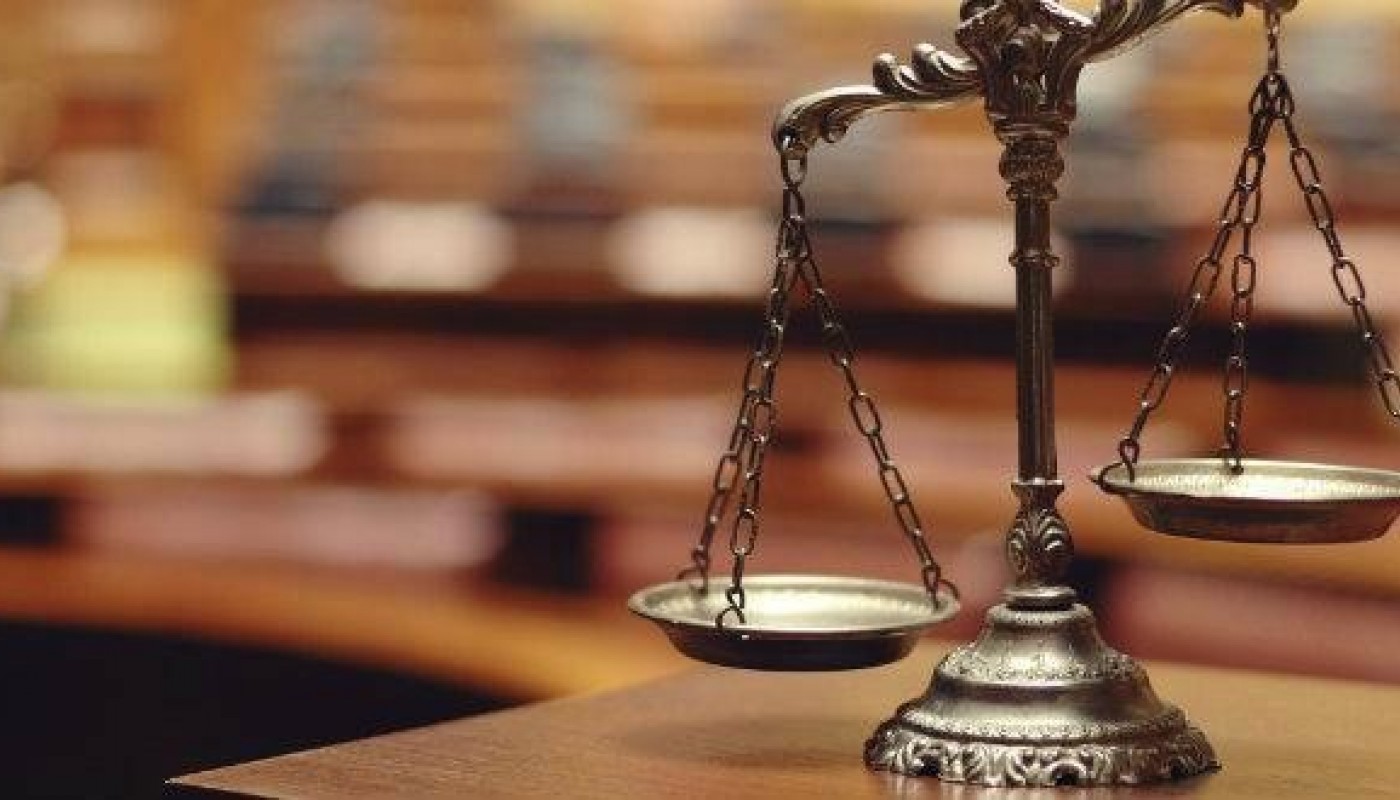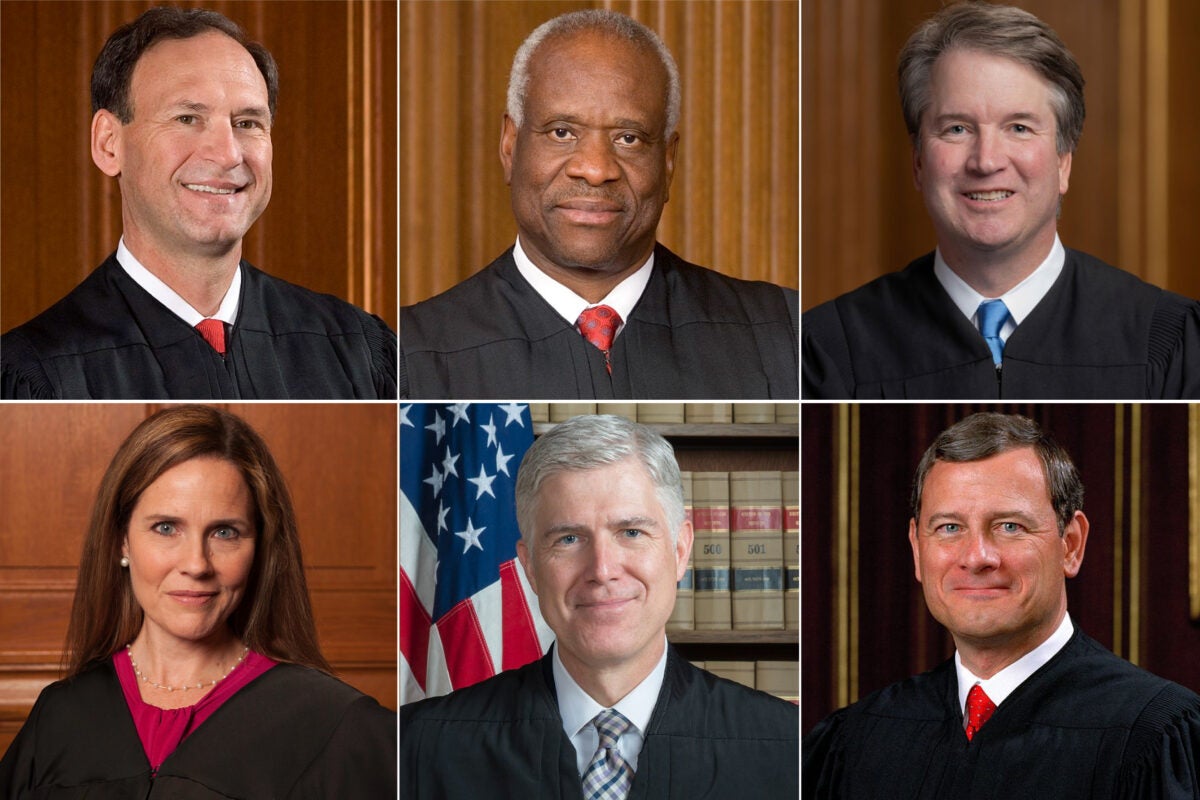U.S. Supreme Court Justices CAN, and some SHOULD be Impeached!
Has a U.S. Supreme Court Justice Ever Been Impeached? YES! A lifetime appointment comes with some caveats…

Supreme Court justices serve for life, unless they resign or are impeached and removed from office. The reason for their lifetime tenure is ostensibly to enable them to make decisions free from any pressure by the executive or legislative branches of government. Since the Supreme Court first convened in 1790, there have been more than one hundred justices—and only one has ever been impeached.
In 1804, the U.S. House of Representatives voted to impeach Associate Justice Samuel Chase. A signer of the Declaration of Independence, Chase was appointed to the U.S. Supreme Court by President George Washington in 1796. A Federalist, Chase irked Thomas Jefferson and his Republican allies in Congress, and was impeached on politically motivated charges of acting in a partisan manner during several trials. However, in 1805 Chase was acquitted by the Senate. He served on the court until his death in 1811.
In 1969, Abe Fortas became the first—and, to date, only—Supreme Court justice to resign under the threat of impeachment. Named to the court by President Lyndon Johnson in 1965, Fortas was forced to step down due to financial improprieties that involved him agreeing to act as a paid consultant to the family foundation of a man under investigation for securities fraud.
In addition to Samuel Chase, 14 federal judges (who are appointed by the president and confirmed by the Senate) have been impeached over the course of American history, on charges ranging from drunkenness on the bench to accepting bribes. The first impeachment was in 1803 and the most recent was in 2010. Eight of the jurists were convicted by the Senate and removed from office, while three were acquitted and three resigned.
What is judicial impeachment?
Impeachment is a process by which the political branches of government — usually the legislature — can remove judges from office. Because the impeachment power lies primarily in the hands of politicians, it is at times threatened for partisan reasons, but the impeachment and removal of judges is in fact rare and usually limited to grave ethical or criminal misconduct such as perjury, fraud, or conflicts of interest.
How does the impeachment process work?
Federal and state constitutions provide different mechanisms for impeachment of judges, but impeachment is generally a two-step process.
With respect to federal judges, under Article I of the United States Constitution, the House of Representatives has the power to impeach and the Senate the power to hold a trial to determine whether removal is appropriate. The House can impeach a judge with a simple majority vote. However, a judge may only be removed from office following a trial and a vote to convict by a two-thirds majority of the Senate.
Most states’ procedures for the impeachment and removal of judges are similar to the federal approach (see Pennsylvania, for example), requiring a majority vote of the lower house in the legislature and a two-thirds vote of the upper house. But in some states (including New York and Nebraska), the trial following impeachment is conducted by a court comprised of state officials and/or state judges. And in others, the number of votes required to impeach or convict differs.
How common is it to impeach judges?
So one thing, at least, is clear: Unlike for presidents, there is ample precedent for firing federal judges via impeachment. They are not immune to this constitutional remedy simply by virtue of sitting on the nation’s highest court!
Congress looked deeply into the grounds for impeaching federal judges in 1970, during an inquiry by a special subcommittee of the Judiciary Committee into the conduct of Associate Supreme Court Justice William O. Douglas. At President Richard Nixon’s behest, then-Republican House Minority Leader Gerald Ford called for the impeachment of the famously liberal Douglas. The allegations included conflicts of interest (Douglas sold an article to a magazine and didn’t recuse himself when a libel case against it later reached the Supreme Court and, separately, had been paid to run a foundation whose namesake purportedly had criminal associations), and political leftism (Douglas’ recent book, Points of Rebellion, Ford said, “fanned the fires of unrest, rebellion, and revolution.”) After a six-month investigation, the majority-Democratic committee voted along party lines to take no action.
But the committee did produce a lengthy report that actually helped clarify the standard for removal. It opined on the behavior for which judges can be impeached, that is, for criminal conduct (either in connection with their judicial role or privately) or for abuse of public duty. The report also cited the federal statute governing federal judicial recusals, 42 U.S.C. § 455. It still provides: “Any justice, judge or magistrate of the United States shall disqualify himself in any proceeding in which his impartiality may reasonably be questioned.” By its terms, then, this law applies to Supreme Court justices, though there exists no means of enforcing it short of impeachment. (Those who claim the Supreme Court has no code of conduct may be overlooking this.)

Federal judges have been impeached and removed for transgressions that, although serious, seem much less impeachable because they had no bearing on the viability and stability of American democracy. John Pickering was removed in 1804 from a federal trial court position for mental instability and intoxication. Robert W. Archbold was impeached in 1912 and removed in 1913 from an appellate court post on charges of having an improper financial relationship with litigants. Halsted L. Ritter was impeached and removed from the district court in Florida in 1936 for exercising favoritism in appointing bankruptcy receivers and practicing law on the bench. Most recently, in 2010, G. Thomas Porteous, Jr. lost his seat on the U.S. District Court for the Eastern District of Louisiana for accepting bribes and committing perjury.
A decision in either body to undertake a formal investigation would not require a supermajority vote, mind you — just political courage around what is perhaps the most solemn task ever to face the U.S. Congress: protection of the American system of government itself or The People‘s overwhelming majority interest.
What conduct constitutes grounds for impeachment?
The United States Constitution provides little guidance as to what offenses constitute grounds for the impeachment of federal judges: as with other government officials, judges may be removed following impeachment and conviction for “Treason, Bribery, or other high Crimes and Misdemeanors”; otherwise, under Article III, Section 1, judges “shall hold their Offices during good Behaviour.”
However, the impeachment power has historically been limited to cases of serious ethical or criminal misconduct. For example, in 2009, the House impeached U.S. District Court Judge Samuel B. Kent on charges of sexual assault, obstructing an official proceeding, and making false statements. Kent resigned before the Senate tried the charges. The next year, the House impeached U.S. District Court Judge G. Thomas Porteous Jr. on allegations of bribery and making false statements. The Senate convicted Porteous. Of the 15 federal judicial impeachments in history, the most common charges were making false statements, favoritism toward litigants or special appointees, intoxication on the bench, and abuse of the contempt power.
While state constitutions vary in their definitions of impeachable offenses, the few recent successful impeachment efforts in states confirm that legislators generally have limited that power to cases of serious ethical and criminal violations. For example, the 1994 removal of Pennsylvania Supreme Court Justice Rolf Larsen involved charges that Larsen had asked a doctor to write fraudulent drug prescriptions, improperly communicated with lawyers and a trial judge about a pending case, and lied under oath. And New Hampshire Supreme Court Justice David Brock was impeached for improper communications in two cases and for lying under oath.
Can judges be impeached for their rulings on the bench?
Historical practice suggests a strong tradition against impeaching judges for judicial rulings. Chief Justice William Rehnquist, who wrote a book examining the history of judicial impeachment, found that early historical uses of the impeachment power established a norm that “judicial acts — their rulings from the bench — would not be a basis for removal from office by impeachment and conviction.”
According to Rehnquist, the attempted removal of Supreme Court Justice Samuel Chase in 1804 was, in particular, “enormously important in securing the kind of judicial independence contemplated by” the Constitution. President Thomas Jefferson, a Democratic-Republican, encouraged the House to impeach Chase, a Federalist, after Chase openly criticized the president and his policies to a Baltimore grand jury. In addition to the charge that his partisan statements undermined the judiciary, the charges against Chase ultimately included inflated allegations of misconduct in several trials. The House impeached Chase in 1804, but the following year, the Senate declined to convict, despite Jefferson’s party holding a supermajority. This failed impeachment helped set the bounds of the proper use of the impeachment power — including that judicial decisions should not be a basis for removing judges from the bench.
This norm contributes to the United States’ carefully balanced three-branch system of government, which requires that judges remain insulated from political pressure when deciding cases. Job security is one important contributor to maintaining judicial independence — so that judges are deciding cases based on their understanding of what the law requires and not worrying that they could be removed from office if powerful political actors disagree with their rulings.
How to impeach a Supreme Court justice
The process of impeaching a Supreme Court justice is identical to the more well-tread procedure for removing a sitting president.
First, the House must draft articles of impeachment. The House then needs only a majority, however slim, to impeach a Supreme Court justice or any other federal judge. But a two-thirds majority is required in the Senate to convict.
“The precedents in this country, as they have developed, reflect the fact that conduct which may not constitute a crime, but which may still be serious misbehavior bringing disrepute upon the public office involved, may provide a sufficient ground for impeachment,”
Elizabeth Bazan
Article III federal judges are appointed to life terms while serving “during good Behaviour,” as stated in Section 1 of Article III of the United States Constitution. Though it does not expressly state in the Constitution that judges may be impeached and removed from office, they fall under the label of “Civil Officers” in Article II, Section 4. That says:
The President, Vice President and all Civil Officers of the United States, shall be removed from Office on Impeachment for, and Conviction of, Treason, Bribery, or other high Crimes and Misdemeanors. The United States Senate has removed judges from office for substantial questionable conduct, even if no crime was committed.
A bit of history
Why did the Framers guarantee that we would have a Supreme Court (unless the Constitution was amended—a very difficult thing to do) but leave open the possibility that there would be no other federal courts, depending on what the politicians in Congress decided? The answer tells us something about the debates at the time the Constitution was written. To some people in the United States at that time, the federal government seemed almost like a foreign government. Those people’s main loyalty was to their states; the federal government was far away, and they did not feel that they had much of a say in who ran it. If you thought that way, an extensive system of federal courts, staffed by judges who were appointed by the President and who might not have a lot of connections to the state and its government, amounted to allowing the “foreign,” federal government to get its tentacles into every corner of the nation. Other Framers, though, thought that the federal government could not be effective unless it had courts to help enforce its laws. If everything were left up to state courts, states that were hostile to the new federal government might thwart it at every turn.
The compromise was that, just as the Constitution and federal laws would be the “supreme Law of the Land,” there would definitely be a Supreme Court—so a court created by the federal government, with judges appointed by the President, would get the last word, in case state courts did something that was too threatening to the new nation. But the extent and shape of the rest of the federal court system—the degree to which the federal government would be present around the nation—would get hashed out in day-to-day politics. The result is the large and powerful federal judiciary we have today.
The second sentence of Article III, Section 1, says: “The judges, both of the supreme and inferior courts, shall hold their offices during good behaviour, and shall, at stated times, receive for their services, a compensation, which shall not be diminished during their continuance in office.” It’s pretty clear what’s going on here: this provision is designed to make sure that the judges are independent. They can decide cases according to what they think the law requires, without worrying about whether some powerful person—or even a majority of the people—will object. As Alexander Hamilton put it in The Federalist No. 78, judicial independence “is the best expedient which can be devised in any government to secure a steady, upright, and impartial administration of the laws.”
The language about “holding offices during good behaviour” has been interpreted to mean that the only way federal judges can be removed from office is if the House of Representatives impeaches them, and the Senate convicts them, of “treason, bribery, or other high crimes and misdemeanors.” Only fifteen judges have ever been impeached (that is, formally accused by the House of Representatives) and only eight have been convicted and removed from office. For practical purposes, any judge who does not commit a crime (or do something equally bad) has “lifetime tenure” and will stay in office until he or she dies or voluntarily steps down. And, as the provision says, Congress and the President cannot retaliate against judges by cutting their salaries.
Most state court judges—unlike federal judges—are elected, not appointed; and some have to be re-elected, or approved by the voters, every few years. Those systems of elected judges are often criticized just because, unlike the federal system, judges might think they have to do politically popular things, or build up political connections, in order to keep their jobs, even if that means ruling in a way that doesn’t follow the law. Very few people think that federal judges should be elected. There are, though, some critics of lifetime tenure: those critics say that lifetime tenure causes judges to stay in their positions longer than they should—after they have become too old to do their job well, either just because of age or because they are out of touch with modern times. Maybe, these critics say, judges should be appointed for a fixed term of years—say 14 or 18 years—with no chance of being reappointed. They still couldn’t be fired and, since they would have to leave at the end of their term, they would have no reason to shape their rulings in a way that pleases powerful figures or popular opinion. But a change like this would almost certainly require a constitutional amendment, and the chance of its happening is extremely small.
Although the guarantee that judges will have lifetime tenure seems simple, it actually raises a difficult question in our system. In the federal government, there are many officials who do judge-like things—think of military courts-martial, for example—but who do not have the lifetime tenure that Article III seems to require for federal judges. Many of these officials are members of, or work for, administrative agencies—what is sometimes called the federal bureaucracy. Officials like this will rule on whether, for example, a company has used advertisements that deceive consumers, or a business has wrongly tried to prevent its workers from joining a union, or the government has not paid a person the disability benefits he or she is entitled to. Thousands of decisions of this kind are made every year by federal officials who are not considered “judges” for purposes of Article III, and therefore do not have lifetime tenure, but who are doing the kinds of things judges usually do: settle disputes between people. These administrative officials usually serve only for a few years, after which the President can replace them. There are safeguards to prevent officials of this kind from being openly biased or unfair, but because they are appointed so frequently, they are often thought to be more responsive to day-to-day politics than judges are.
Why do we allow these officials to resolve disputes in the way that judges do, even though they do not have the lifetime tenure guarantee that judges have? The answer is complicated, but the basic idea is that you generally have a right to appeal from a decision of one of these officials to a judge whose independence is protected by lifetime tenure. So judges—including, potentially, the Supreme Court—will have the final word, and that, the Supreme Court has said, is enough to maintain the principle of judicial independence enshrined in Article III.



